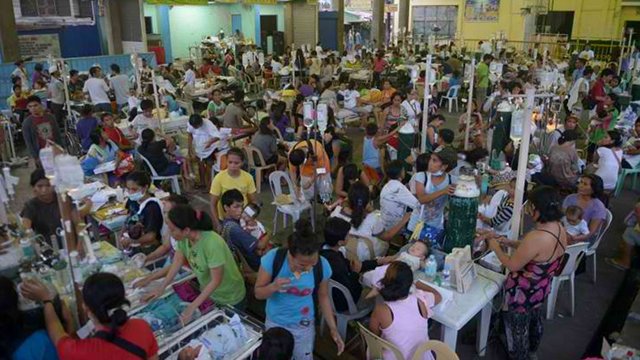SUMMARY
This is AI generated summarization, which may have errors. For context, always refer to the full article.

MANILA, Philippines – Victims of the earthquake that devastated Central Visayas can avail themselves of loans to rebuild their homes. Yet while government offers assistance, lawmakers stressed the need to prioritize disaster preparedness as Metro Manila is also vulnerable to a powerful quake.
Vice President Jejomar Binay, chairman of the Housing Urban Development Coordinating Council, instructed shelter agencies to help the victims easily apply for calamity loans, loan moratorium or resettlement.
A magnitude 7.2 earthquake struck the region on Tuesday, October 15, killing over 100 people, destroying homes and buildings including iconic churches and heritage sites. Bohol and Cebu were the worst-hit provinces and are under a state of calamity.
In a statement on Wednesday, Binay explained that Pag-IBIG Fund members can avail themselves of up to 80% of their total savings under the calamity loan program. This loan can be paid in over two years, with a 3-month grace period at an interest of 5.95% per year.
Pag-IBIG also imposed a 3-month moratorium on the payment of housing loan amortizations. Binay said borrowers must file their application for the moratorium within 90 days after their area declared a state of calamity.
For those who need to repair their homes, the National Housing Authority (NHA) will provide home materials assistance. Yet for those whose houses were totally ruined in danger zones, NHA will offer resettlement.
Binay will visit Bohol and Cebu on Thursday, October 17.
President Benigno Aquino III is currently visiting the provinces to assess the extent of the damage. The President has said the priority is structural assessment to ensure that people are not put in more danger due to damaged buildings.
The earthquake was the most powerful to hit the Visayas in 23 years, with the tremor so strong it was felt in Mindanao. Aftershocks continue to be felt in the region, forcing people to sleep outside of their homes overnight fearing more damage. Staff and patients also had to evacuate damaged hospitals.
P15 billion from calamity fund?
Senator Bam Aquino, the President’s cousin, urged the Office of the President to create a P15 billion rehabilitation fund to rehabilitate old churches, tourism sites, and damaged establishments.
Senator Aquino told Rappler the fund can be earmarked from the current calamity fund of the Office of the President.
The Department of Social Welfare and Development has already allotted P10 million for relief goods for Central Visayas.
“This rehabilitation fund will cover all bases in rehabilitation to help provinces such as Bohol and Cebu to fully recover from the devastating and crippling effect of this calamity,” Aquino said in a separate statement.
Aquino said it was important to rehabilitate the structures because Bohol thrives on tourism while Cebu is considered the region’s center of business and trade. Cebu is known as the country’s de facto second capital.
The senator added that the money can also be used to help other affected areas like Siquijor and towns in Mindanao.
Metro Manila at risk, too
Beyond disaster response, Senator Loren Legarda reiterated her call for preparedness, citing studies that Metro Manila is also due for an earthquake as powerful as the one that hit Bohol and Cebu.
In a statement Tuesday, Legarda quoted the Philippine Institute of Volcanology and Seismology (Phivolcs) that the Marikina Valley Fault Line is “ripe for movement” but no one can predict when the quake will occur.
The senator also cited the Metro Manila Earthquake Impact Reduction Study conducted by the Japan International Cooperation Agency in 2004. The study found that a magnitude 7.2 quake in Metro Manila will:
- Kill 34,000 people
- Injure 114,000 individuals
- Destroy 40% of residential buildings
- Damage 35% of all public buildings
- Cause fires that will result in 18,000 additional fatalities
Legarda said the study contained priority actions that should have been undertaken 3 to 6 years after it was published to reduce the effects of the possible tremor. These include:
- Promotion of disaster-resilient urban development
- Ensuring the structural integrity of buildings and critical infrastructure
- Formulating emergency supply system of water, food and other necessities
- Determining open spaces for safe refuge when tremors occur.
Legarda urged the government to ensure that structures especially bridges, schools and hospitals are earthquake-proof through a nationwide structural evaluation and by retrofitting structures.
“Earthquakes turn into major disasters due to unsafe structures—poorly built structures, buildings in inappropriate places, inadequate design and materials specification, and shortcuts in construction.”
She added, “Inspection during the construction of both public and private infrastructure is important. The additional expense required for making structures safe from earthquakes is worth it especially if it would save thousands of precious lives.” – Rappler.com
Add a comment
How does this make you feel?





There are no comments yet. Add your comment to start the conversation.